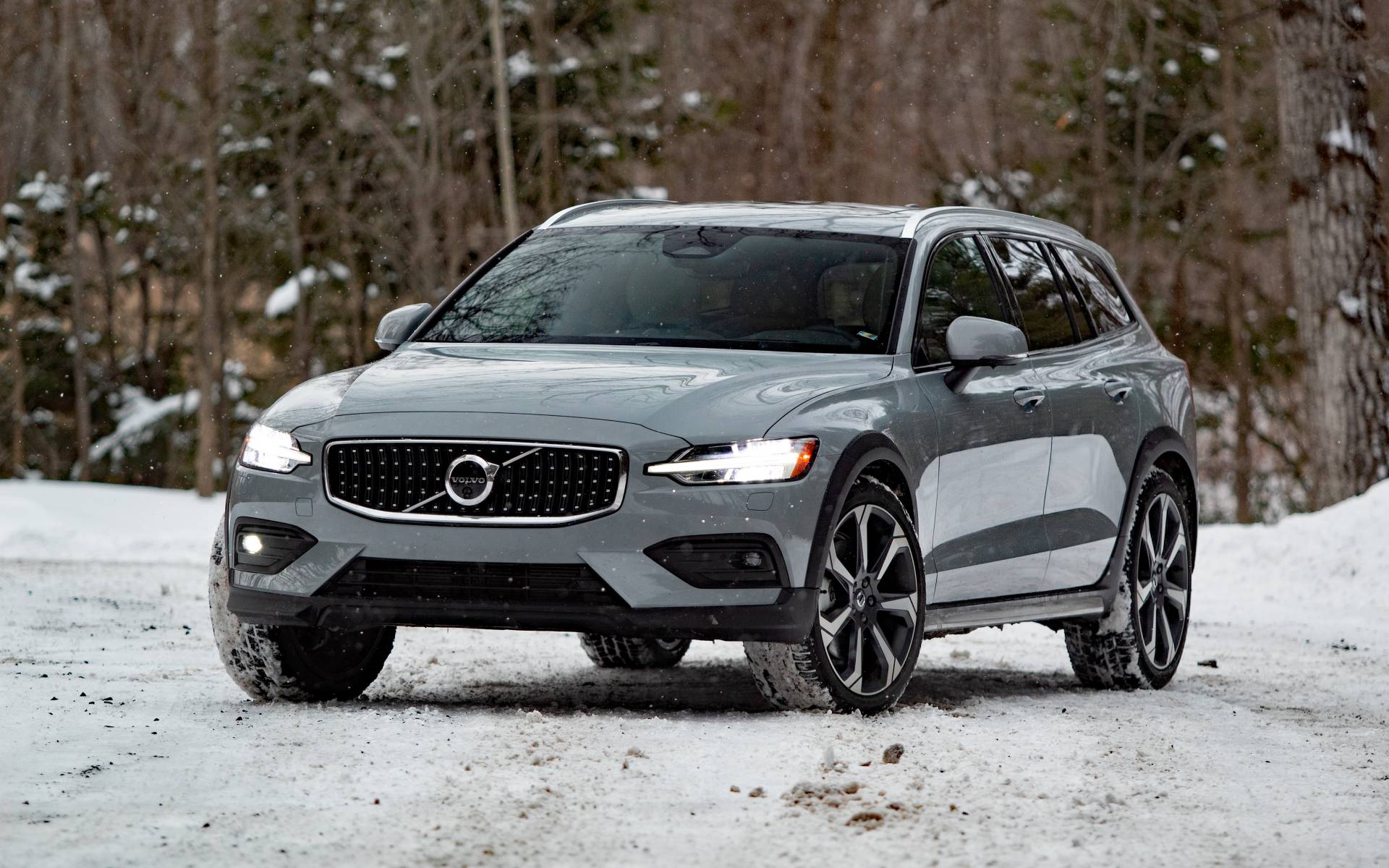In the ever-evolving world of automotive design, practical storage solutions often take a backseat to flashier features. Yet, for many drivers, the ability to secure cargo effectively makes all the difference in daily usability.
Factory cargo nets represent an often overlooked but crucial element of interior design that separates truly functional vehicles from mere showpieces. When properly implemented, these simple mesh networks prevent everything from groceries to gear from becoming dangerous projectiles during sudden stops or turns.
Unfortunately, not all manufacturer installed cargo nets are created equal many prove flimsy, awkwardly positioned, or simply too small to be practical. However, certain automakers have perfected the art of cargo containment, offering robust, versatile netting systems that genuinely enhance vehicle utility.
The following compilation highlights ten vehicles whose factory cargo nets transcend mere afterthoughts, instead serving as thoughtfully engineered solutions that demonstrate a deep understanding of drivers’ real-world needs.
From spacious SUVs to compact hatchbacks, these diverse offerings prove that effective cargo management needn’t require aftermarket modifications or constant frustration.
1. Honda CR-V
The Honda CR-V stands as a masterclass in practical cargo management, with a factory cargo net system that exemplifies thoughtful engineering.
Unlike the flimsy afterthoughts found in many competitors, Honda integrates a multi-configuration netting system that demonstrates a clear understanding of how owners use their vehicles.
The primary cargo net spans the entire rear compartment width, constructed from industrial-grade elastic material that maintains tension even after years of stretching and temperature fluctuations.
Its reinforced attachment points connect directly to the vehicle’s frame rather than merely to trim pieces, allowing the net to securely hold heavier items without sagging or detaching during emergency maneuvers.
What truly distinguishes the CR-V’s system is its adaptability. The standard horizontal configuration prevents items from sliding forward during braking, but owners can quickly reconfigure the same net into a vertical position, creating separate compartments within the cargo area.
This proves invaluable for segregating groceries, sports equipment, or work materials. Additionally, Honda provides smaller secondary nets for the cargo area sidewalls, perfect for corralling smaller items that would otherwise roll around freely.
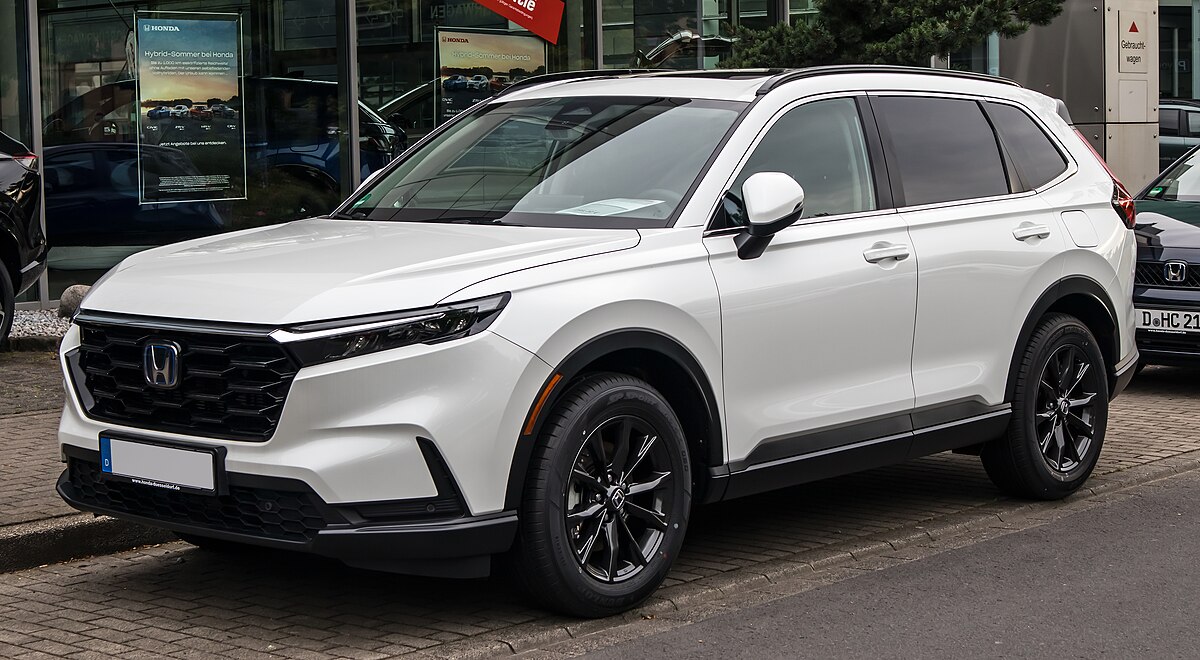
Installation and removal require no tools, with intuitive hooks that even first-time users can master immediately. The nets’ mesh density strikes the perfect balance – tight enough to contain small items while maintaining visibility for the driver through the rear window.
The material itself resists the fading and brittleness that plague aftermarket alternatives, maintaining its elasticity even in extreme heat and cold. Perhaps most impressively, Honda designed these nets to function seamlessly with the CR-V’s other cargo features.
The nets can remain attached while the adjustable cargo floor is raised or lowered, and they don’t interfere with the power liftgate operation. When not needed, each net collapses into a compact bundle that stores neatly in a dedicated compartment under the cargo floor, consuming minimal space.
For CR-V owners who regularly transport a variety of cargo, this system eliminates the constant frustration of items sliding, tipping, or becoming damaged during transit.
The thoughtful integration of these cargo nets demonstrates Honda’s commitment to real-world functionality rather than mere specifications on a feature list.
2. Toyota RAV4 Adventure
The Toyota RAV4 Adventure takes cargo management seriously with a factory net system engineered specifically for those who embrace active lifestyles. What sets the RAV4’s cargo nets apart is their dual-purpose design functioning both as organizational tools and as robust securements for adventure gear.
Unlike many competitors who treat cargo nets as obligatory accessories, Toyota developed the Adventure’s netting as an integral component of the vehicle’s utility-focused mission.
The primary cargo net features a uniquely reinforced center section with double-stitched, heavy-duty elastic banding that provides superior tension compared to standard automotive netting.
This construction allows it to securely hold heavier adventure equipment like climbing gear, camping stoves, or compressors without stretching out prematurely.
The attachment points are among the industry’s most robust, anchored directly to specially reinforced sections of the cargo area structure rather than superficial trim pieces.
Toyota’s engineers studied how outdoor enthusiasts use their vehicles when designing this system. The main net can be installed in multiple configurations horizontally for preventing forward shifting during stops, vertically to separate wet or dirty gear from clean items, or diagonally to secure awkwardly shaped equipment like fishing rods or tripods.
This versatility eliminates the need for vehicle owners to purchase separate aftermarket solutions for different activities.
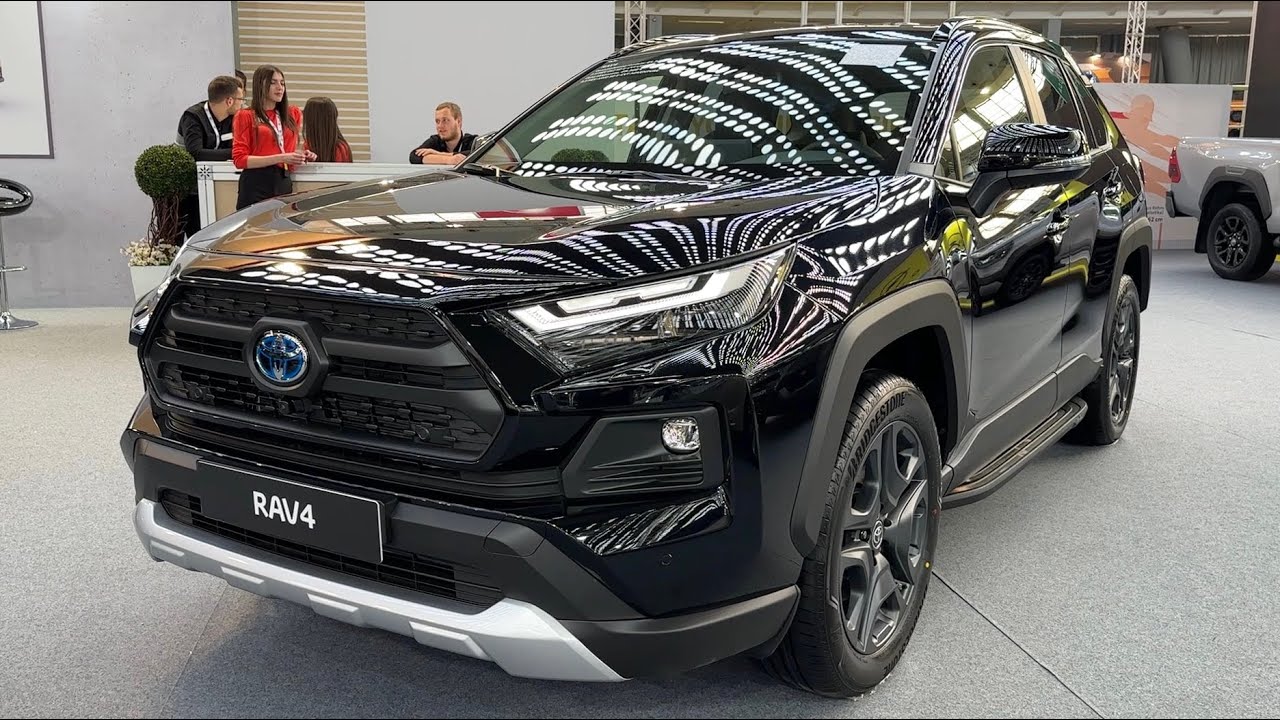
Particularly impressive is the RAV4 Adventure’s side-wall netting system. Unlike the token side pockets found in many vehicles, these mesh compartments feature adjustable tension straps that can accommodate items of varying sizes.
Small items like energy bars or sunscreen stay put in tight corners, while larger items like water bottles or trail guides remain accessible without rolling around.
The netting material itself incorporates UV-resistant treatment that prevents degradation even when constantly exposed to sunlight through the windows.
The entire netting system is designed for quick deployment and removal, with color-coded attachment points that make correct installation intuitive even when rushing to pack for a weekend getaway.
When not needed, the nets collapse into remarkably compact bundles that store in designated pockets, consuming minimal cargo space. Unlike basic cargo nets that quickly look worn and stretched, the Adventure’s nets maintain their tension and appearance even after years of regular use.
For RAV4 Adventure owners who regularly transition between daily commuting and weekend excursions, this thoughtfully engineered netting system eliminates the frustration of constantly rearranging cargo or arriving to find items damaged from shifting during transit.
3. Subaru Outback Wilderness
The Subaru Outback Wilderness elevates cargo management to an art form with a factory netting system explicitly designed for the demands of adventurous drivers who refuse to stay on paved surfaces.
Recognizing that off-road travel subjects cargo to significantly more movement than highway driving, Subaru engineers developed a comprehensive netting solution that maintains organization even when the vehicle is tilted at extreme angles or traversing washboard roads.
The Wilderness edition’s primary cargo net immediately distinguishes itself through its material composition, utilizing a specially developed elastic cord that’s 40% thicker than industry standards.
This robust construction maintains tension even after thousands of stretching cycles, preventing the sagging that renders many factory nets useless after a year of regular use.
The attachment hardware consists of powder-coated, corrosion-resistant metal hooks rather than the plastic clips typically found in competitors, allowing the net to secure heavier items without risk of breakage.
What truly separates the Outback Wilderness’s cargo management system is its three-dimensional approach. Rather than just a single plane of netting across the rear cargo area, Subaru provides an interconnected system that can create secure compartments throughout the space.
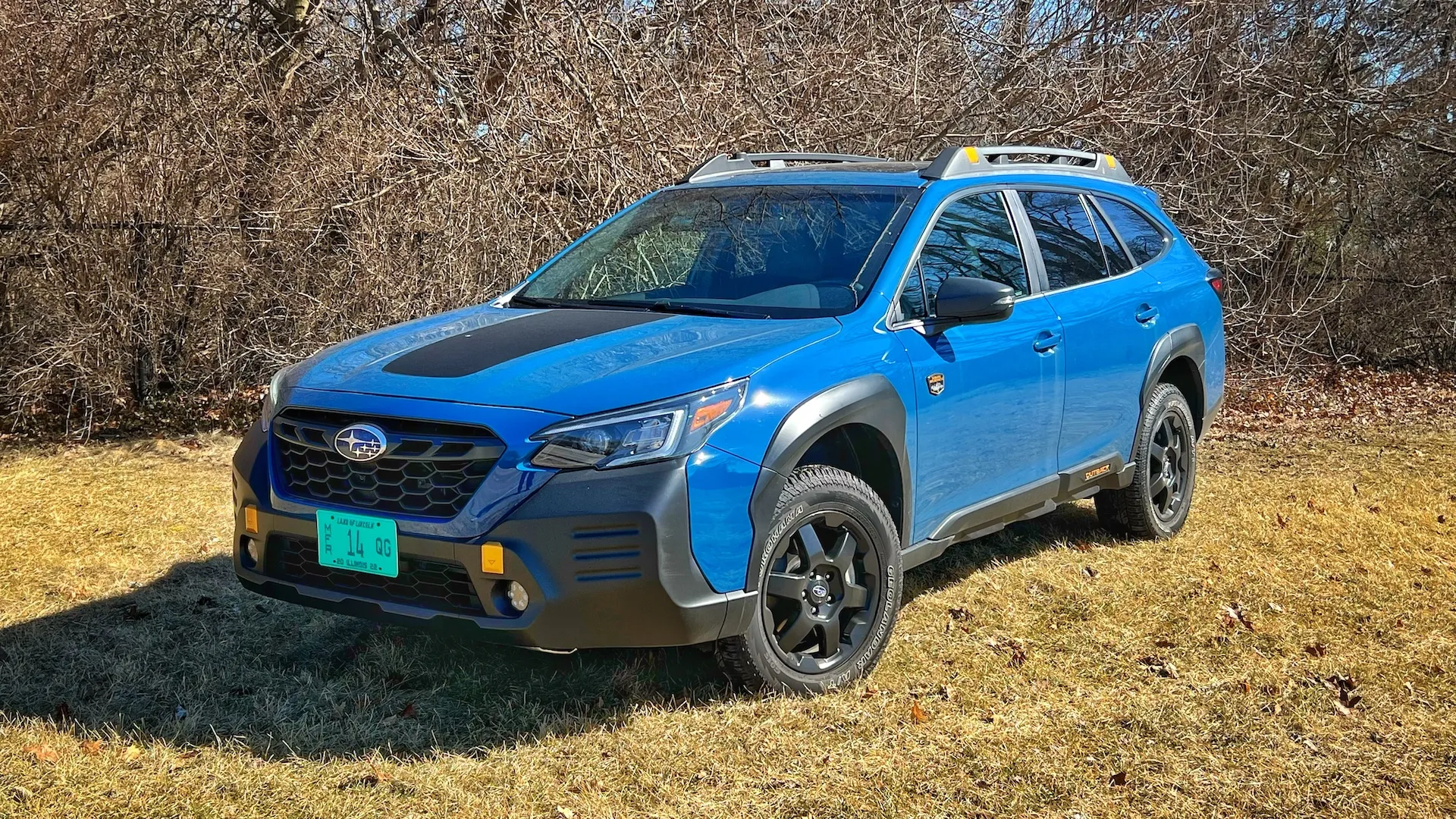
The modular design includes a horizontal floor net, vertical dividers, and ceiling-mounted retention nets that work together to completely immobilize cargo.
This proves invaluable when navigating rough terrain, preventing items from becoming projectiles during sudden directional changes or when traversing steep inclines.
The system’s versatility addresses real-world usage scenarios faced by outdoor enthusiasts. The side wall nets feature specialized loops designed specifically to secure commonly carried items like trekking poles, fishing rods, or recovery gear.
Additionally, Subaru incorporated quick-release mechanisms that allow rapid access to emergency equipment without dismantling the entire cargo arrangement a thoughtful safety feature for remote travel.
Perhaps most impressively, the Wilderness’s cargo nets integrate seamlessly with the vehicle’s other utility features. They remain functional whether the rear seats are upright or folded, work in conjunction with the vehicle’s built-in roof rail system, and don’t impede access to the under-floor storage compartments.
The system accommodates Subaru’s available cargo dividers and waterproof mats, creating a completely customizable solution for different adventure scenarios.
For Outback Wilderness owners who regularly venture beyond paved roads, this comprehensive netting system eliminates the frustration of arriving at destinations with cargo in disarray or spending precious adventure time reorganizing shifted equipment.
It represents Subaru’s understanding that true utility vehicles require thoughtfully engineered solutions rather than superficial features.
4. Volvo V60 Cross Country
The Volvo V60 Cross Country exemplifies Scandinavian pragmatism with a cargo net system that marries exceptional functionality with elegant design.
Unlike manufacturers who treat cargo management as an afterthought, Volvo integrates a sophisticated netting solution that reflects the brand’s dual commitment to utility and refinement.
The result is perhaps the most thoughtfully engineered cargo securing system in the premium wagon segment. What immediately distinguishes the V60’s netting is its structural integration with the vehicle’s architecture.
Rather than simply attaching to existing cargo anchor points, Volvo developed dedicated hardpoints specifically dimensioned for optimal net tension.
The primary cargo net features aircraft-grade aluminum tensioners that maintain precise pressure regardless of temperature fluctuations a significant advantage over basic elastic materials that become slack in heat or brittle in extreme cold.
These tensioners allow users to adjust the net’s tightness based on cargo weight, providing appropriate restraint without risking damage to more delicate items.
The system’s versatility particularly impresses. The main cargo net serves traditional horizontal duty, preventing items from sliding forward, but Volvo’s engineers didn’t stop there. The same net can be reconfigured into a vertical position, creating separate cargo zones.
Most impressively, the net can also be installed behind the front seats when the rear seats are folded, effectively doubling the secured cargo area for longer items. This adaptability eliminates the need to purchase separate nets for different configurations.

Material quality further separates Volvo’s solution from competitors. The netting itself combines high-tensile synthetic fibers with a specialized coating that resists abrasion while maintaining a premium appearance that complements the V60’s refined interior.
Unlike the utilitarian black mesh found in most vehicles, Volvo offers the nets in colorways that coordinate with the chosen interior trim, demonstrating attention to aesthetic details other manufacturers overlook.
The V60 Cross Country also incorporates secondary netting solutions throughout the cargo area. Particularly clever are the integrated side pocket nets that remain taut whether empty or filled, preventing the saggy appearance common in competitors.
Small but significant details include silicone-coated attachment points that eliminate the rattling noises typical of lesser systems during driving. Installation exhibits typical Scandinavian thoughtfulness; the entire system deploys or stows in under 30 seconds without requiring tools or significant strength.
When not needed, the nets collapse into a dedicated storage compartment that consumes minimal cargo space while keeping them readily accessible.
For V60 Cross Country owners who appreciate both form and function, this comprehensive netting system eliminates the choice between practical cargo management and maintaining the vehicle’s premium aesthetic. It demonstrates Volvo’s understanding that true luxury includes thoughtful utility delivered without compromise.
Also Read: 5 SUVs With Surprisingly Deep Under Seat Storage
5. Kia Telluride
The Kia Telluride has redefined expectations in the three-row SUV segment, and its factory cargo net system demonstrates the same attention to detail that makes the entire vehicle so compelling.
Rather than treating cargo management as a checkbox feature, Kia developed a comprehensive netting solution that accommodates the diverse challenges faced by families and adventure-seekers alike.
The result outperforms many luxury competitors despite the Telluride’s more accessible price point. What immediately distinguishes the Telluride’s cargo nets is their structural robustness.
The primary net utilizes dual-density elastic cording thicker reinforced sections handle heavy loads, while more flexible segments maintain proper tension around the perimeter.
Unlike competitors’ nets that quickly stretch out, the Telluride’s maintains proper tension even after years of use. The attachment hardware deserves particular praise machined aluminum hooks connect to reinforced anchor points capable of withstanding forces generated when securing heavier items during emergency maneuvers.
Kia’s engineers studied how families use three-row SUVs when designing this system. The standard configuration provides traditional horizontal coverage to prevent items from sliding forward, but the Telluride offers something competitors don’t a specially designed configuration that functions effectively whether the third row is upright or folded.
This flexibility eliminates the frustration of cargo nets that become unusable in certain seating arrangements, a common complaint with three-row vehicles.
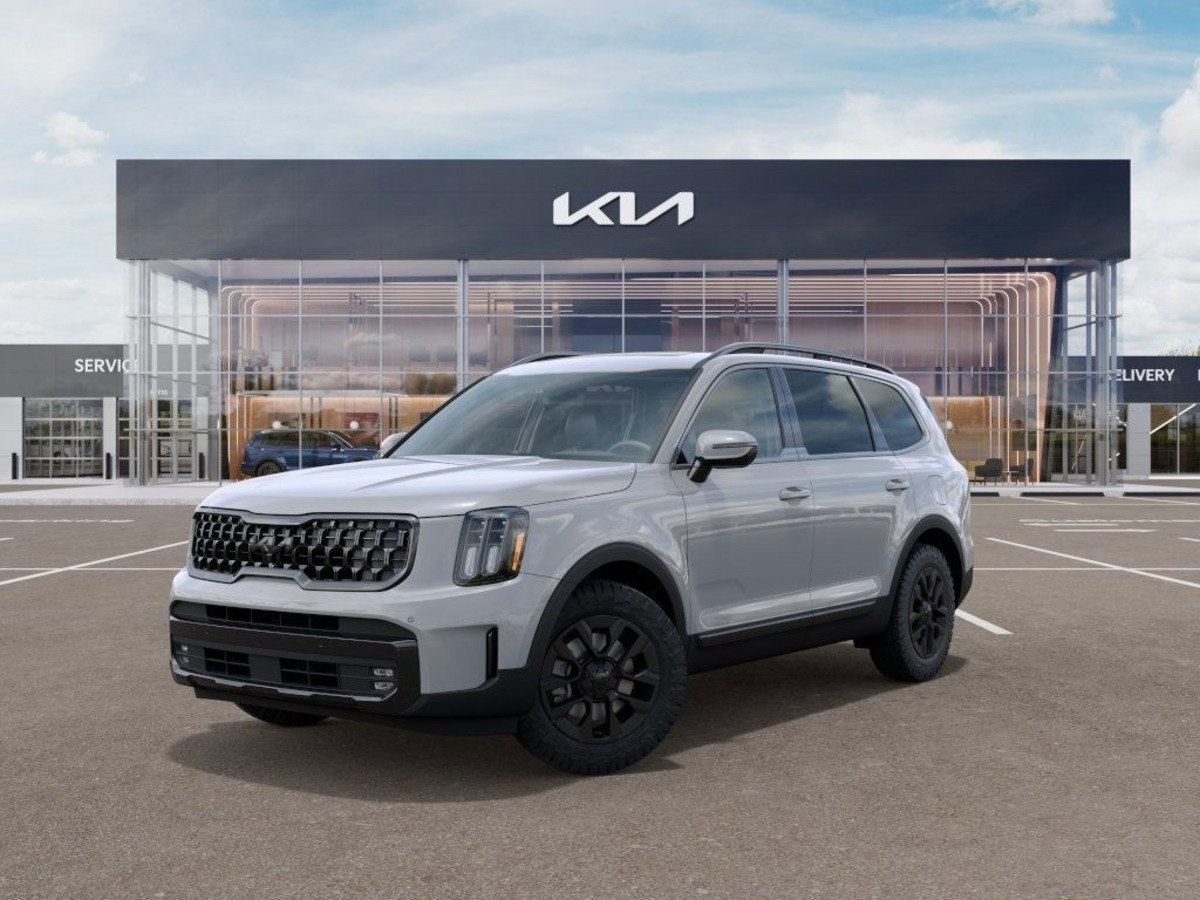
The Telluride’s comprehensive approach includes specialized netting for different cargo scenarios. Particularly clever is the dedicated grocery bag retention system, adjustable corner nets with specialized hooks designed specifically to secure shopping bag handles, preventing spills during cornering or braking.
For outdoor enthusiasts, the side wall nets feature rubberized reinforcement patches that prevent damage when securing harder items like sports equipment or camping gear.
Installation demonstrates exceptional user-centered design. Color-coded attachment points simplify correct positioning, while quick-release mechanisms allow instant access to covered items without completely removing the nets.
When not needed, the entire system collapses into a compact storage case that integrates neatly into the Telluride’s underfloor compartment without consuming valuable cargo space.
Material quality exceeds expectations for the price category. The netting combines UV-resistant synthetic fibers with reinforced border material that prevents fraying at stress points.
This construction maintains both functionality and appearance longer than most factory offerings, avoiding the worn, stretched look that plagues many cargo nets after minimal use.
For Telluride owners juggling the varied transportation needs of family life, this thoughtfully engineered netting system transforms the cargo area from a cavernous box into a genuinely organized and functional space. It demonstrates Kia’s commitment to exceeding expectations rather than merely matching competitors in every aspect of vehicle design.
6. Ford Bronco Sport
The Ford Bronco Sport approaches cargo management with rugged pragmatism, offering a factory netting system explicitly designed for adventurous lifestyles.
While many competitors offer token nets that serve more as marketing features than practical tools, Ford engineered the Bronco Sport’s cargo systems with the same go-anywhere philosophy that defines the entire vehicle.
The result is perhaps the most durable and versatile factory cargo net available in the compact SUV segment. What immediately sets the Bronco Sport’s cargo nets apart is their military-grade construction.
The primary net utilizes tightly woven, high-denier synthetic cordage that resists abrasion even when securing rough-edged equipment. Rather than relying solely on elasticity for tension, Ford incorporates adjustable ratcheting mechanisms similar to those found in professional cargo transportation.
This allows users to precisely calibrate tension based on load weight and driving conditions critical when navigating the off-road terrain the Bronco Sport is designed to conquer.
The system’s modularity particularly impresses. The standard configuration provides traditional horizontal coverage preventing forward movement, but Ford didn’t stop there.
The same components can be reconfigured into vertical dividers, diagonal braces for awkwardly shaped gear, or even as an overhead hammock-style net for lighter items. This adaptability eliminates the need for multiple aftermarket solutions to handle different adventure scenarios.
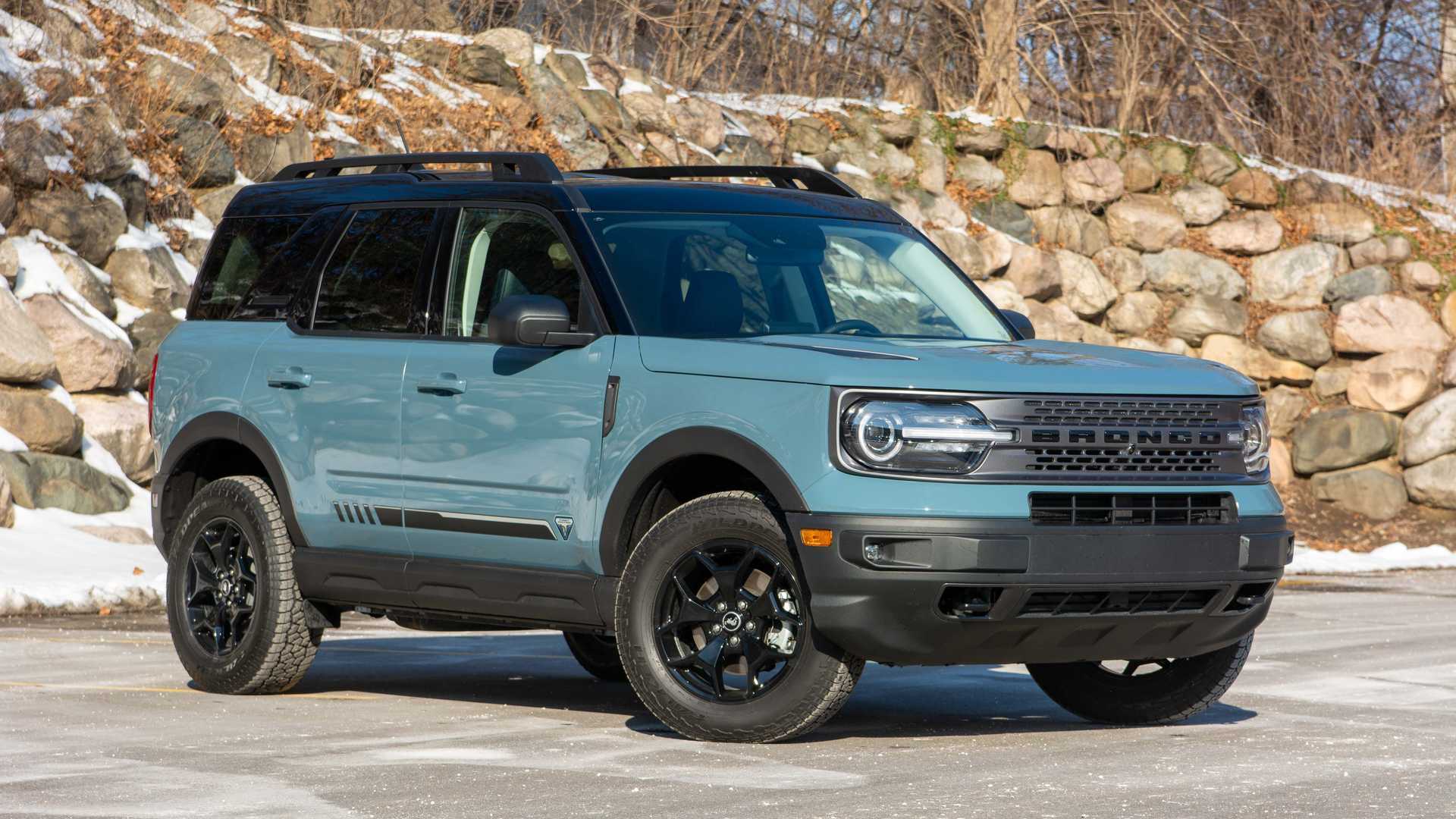
Material selection demonstrates Ford’s understanding of real-world use cases. The netting incorporates a hydrophobic treatment that prevents water absorption and subsequent mildew a crucial feature for gear that may be repeatedly exposed to wet conditions.
Attachment points consist of powder-coated metal carabiners connecting to dedicated reinforced anchor points rather than flimsy plastic clips, allowing the system to reliably secure heavier loads like mountain bikes, camping coolers, or recovery equipment.
Ford’s engineers listened to outdoor enthusiasts when developing secondary netting features. Particularly useful are the specially designed side wall nets with graduated pocket sizes smaller tight-mesh sections secure tiny items like energy bars or batteries, while larger pockets accommodate water bottles or first aid kits.
The entire perimeter features MOLLE-compatible webbing that accepts standard tactical pouches, allowing owners to further customize their cargo organization.
Installation demonstrates practical field-usability. The entire system deploys or stows without tools, with glove-friendly attachment points that can be operated even in adverse conditions.
When not needed, the nets collapse into a surprisingly compact bundle that stores in a dedicated weatherproof container, protecting them from damage while consuming minimal space.
For Bronco Sport owners who regularly transition between daily commuting and weekend adventures, this comprehensively engineered netting system eliminates the compromise between practical cargo management and maintaining the vehicle’s ready-for-anything character.
7. Mazda CX-5
The Mazda CX-5 approaches cargo management with the same philosophy that defines the entire vehicle – delivering premium functionality with an elegant execution that punches above its price class.
Unlike competitors who treat cargo nets as perfunctory accessories, Mazda integrates a sophisticated netting system that demonstrates deep understanding of how drivers use their vehicles daily.
The result is cargo management that enhances the ownership experience rather than merely checking a feature box. What immediately distinguishes the CX-5’s cargo nets is their refined construction quality.
The primary net utilizes a specially developed elastic material with significantly tighter weave than industry standards, providing more consistent tension across the entire surface.
This prevents the uneven sagging that plagues many factory nets and maintains a taut, organized appearance even after years of regular stretching.
The attachment mechanisms feature brushed aluminum finishes that coordinate with the vehicle’s interior trim, demonstrating Mazda’s attention to aesthetic details others overlook.
The system’s versatility particularly impresses. While most manufacturers offer basic horizontal coverage, Mazda engineers developed a transformable system that adapts to different cargo scenarios.
The primary net easily reconfigures from horizontal to vertical orientation, creating separate compartments without requiring additional parts. Most cleverly, the attachment points are positioned to allow the net to function effectively regardless of whether the rear seats are upright or folded a functionality often lost in competitors.
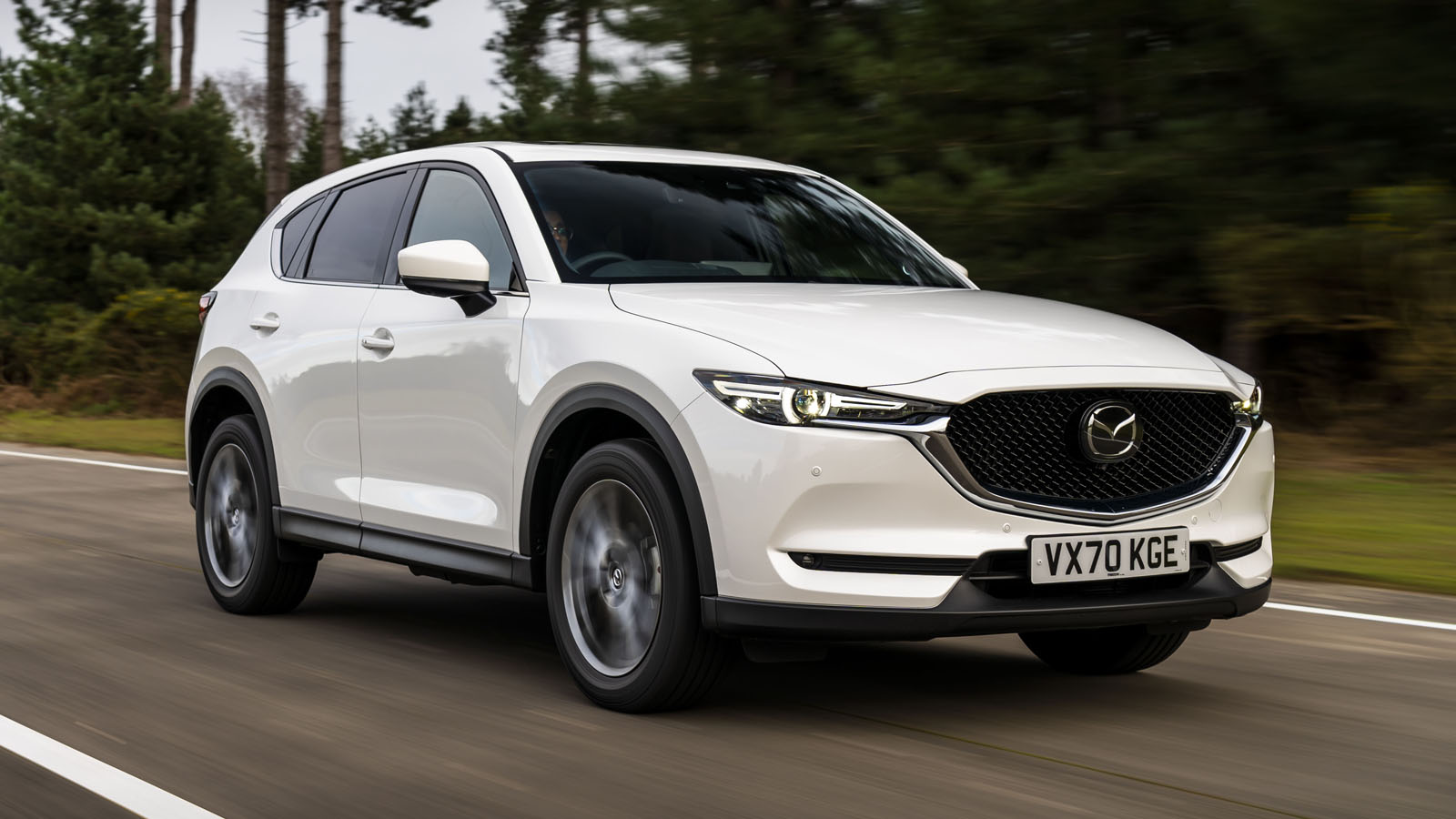
Material selection demonstrates Mazda’s emphasis on lasting quality. The netting combines high-tensile synthetic fibers with reinforced edge binding that prevents fraying at stress points.
Unlike the basic black mesh found in most vehicles, the CX-5’s nets feature subtle tonal coloring that coordinates with the chosen interior palette, maintaining the vehicle’s upscale ambiance throughout the cargo area.
Particularly innovative are the CX-5’s integrated side wall nets. Rather than simple pouches, these feature adjustable tension systems that remain taut whether empty or filled, eliminating the sloppy appearance common in competitors.
The pocket dimensions are carefully calculated to secure items drivers carry from water bottles to electronic devices – while maintaining accessibility while driving.
Installation exemplifies Mazda’s human-centered design approach. The entire system deploys or stows in seconds without requiring significant strength or dexterity. Color-coded attachment points eliminate guesswork, while soft-touch coatings prevent fingernail damage during handling.
When not needed, the nets fold into a dedicated storage compartment that integrates seamlessly with the CX-5’s clean interior design. For CX-5 owners who appreciate both form and function, this thoughtfully engineered netting system transforms the cargo area from a utilitarian space into a genuinely premium experience. It demonstrates Mazda’s commitment to elevating every aspect of vehicle ownership beyond what’s expected in its price category.
8. Jeep Grand Cherokee L
The Jeep Grand Cherokee L addresses cargo management with the same capability-focused engineering that defines the brand’s approach to off-road performance.
Recognizing that a three-row SUV must balance family practicality with adventure readiness, Jeep developed a comprehensive netting system that excels in both everyday use and more demanding scenarios. The result sets new standards for versatility in the midsize SUV segment.
What immediately distinguishes the Grand Cherokee L’s cargo nets is their industrial-grade durability. The primary net incorporates mil-spec materials more commonly found in tactical equipment than automotive accessories.
High-tensile nylon webbing reinforces the perimeter, while the mesh center uses a specialized pattern that distributes force more evenly than conventional netting. This construction allows the system to reliably secure heavier adventure equipment that would overwhelm lesser factory offerings.
Most impressive is the system’s adaptability across different seating configurations a critical feature for three-row vehicles. Unlike competitors whose nets become unusable with certain seat arrangements, Jeep engineered mounting points are specifically positioned to provide effective coverage whether operating with all three rows upright, the third row folded, or both second and third rows stowed. This eliminates the common frustration of factory nets that serve only a single configuration.
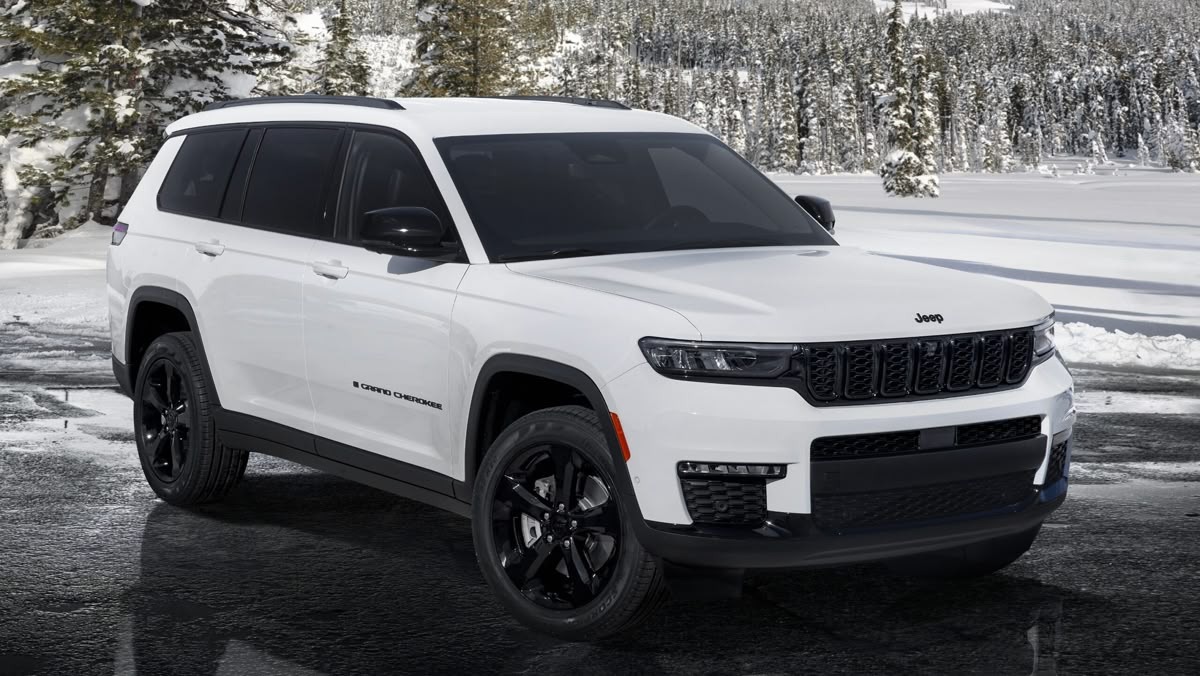
The comprehensive approach includes specialized netting for different cargo scenarios. Particularly innovative is the modular divider system – interlocking vertical nets that create customizable compartments throughout the cargo area.
This proves invaluable for organizing family gear, preventing grocery bags from tipping, or separating clean items from dirty outdoor equipment. The side wall nets feature graduated pocket sizes with reinforced entry points that maintain their shape even when frequently accessed.
Installation demonstrates Jeep’s understanding of user experience in real-world conditions. Quick-connect attachments require minimal force to secure yet remain firmly anchored during demanding driving situations.
The entire system uses a consistent attachment methodology, eliminating confusion when reconfiguring for different needs. When not required, the nets stow in a dedicated weatherproof container that protects them from damage while consuming minimal cargo space.
Material selection balances durability with refinement the heavy-duty construction uses premium materials that maintain an upscale appearance appropriate for the Grand Cherokee L’s position as a premium SUV.
Unlike the utilitarian look of many rugged cargo systems, Jeep’s implementation complements the vehicle’s interior design while sacrificing nothing in functionality.
For Grand Cherokee L owners navigating the diverse demands of family life and adventure pursuits, this comprehensively engineered netting system transforms a potentially chaotic cargo area into a genuinely organized and functional space.
It demonstrates Jeep’s understanding that true capability includes thoughtful solutions for all aspects of vehicle use, not just off-road performance.
9. Hyundai Tucson Hybrid
The Hyundai Tucson Hybrid exemplifies thoughtful modern engineering with a cargo net system that demonstrates remarkable attention to practical details.
Rather than treating cargo management as an obligatory feature, Hyundai developed an integrated netting solution that enhances the vehicle’s everyday livability.
The result is perhaps the most user-friendly cargo organization system in the compact crossover segment, delivering functionality that enhances the ownership experience.
What immediately distinguishes the Tucson Hybrid’s cargo nets is their intelligent integration with the vehicle’s hybrid architecture. Unlike many electrified vehicles that sacrifice cargo features to accommodate battery components, Hyundai engineered a netting system that capitalizes on the Tucson’s unique under-floor structure.
The primary cargo net features variable tension zones firmer along perimeters where heavy items typically rest, more elastic in central areas for flexibility with diverse cargo shapes. This thoughtful design maintains effectiveness across various loading scenarios without requiring manual adjustment.
The system’s versatility particularly impresses. The standard configuration provides traditional horizontal coverage, but Hyundai’s engineers developed additional mounting points enabling vertical, diagonal, and even ceiling-mounted configurations using the same components.
Most cleverly, the attachment system accommodates the Tucson Hybrid’s adjustable-height cargo floor in any position, maintaining functionality regardless of whether owners prioritize maximum space or flat loading.
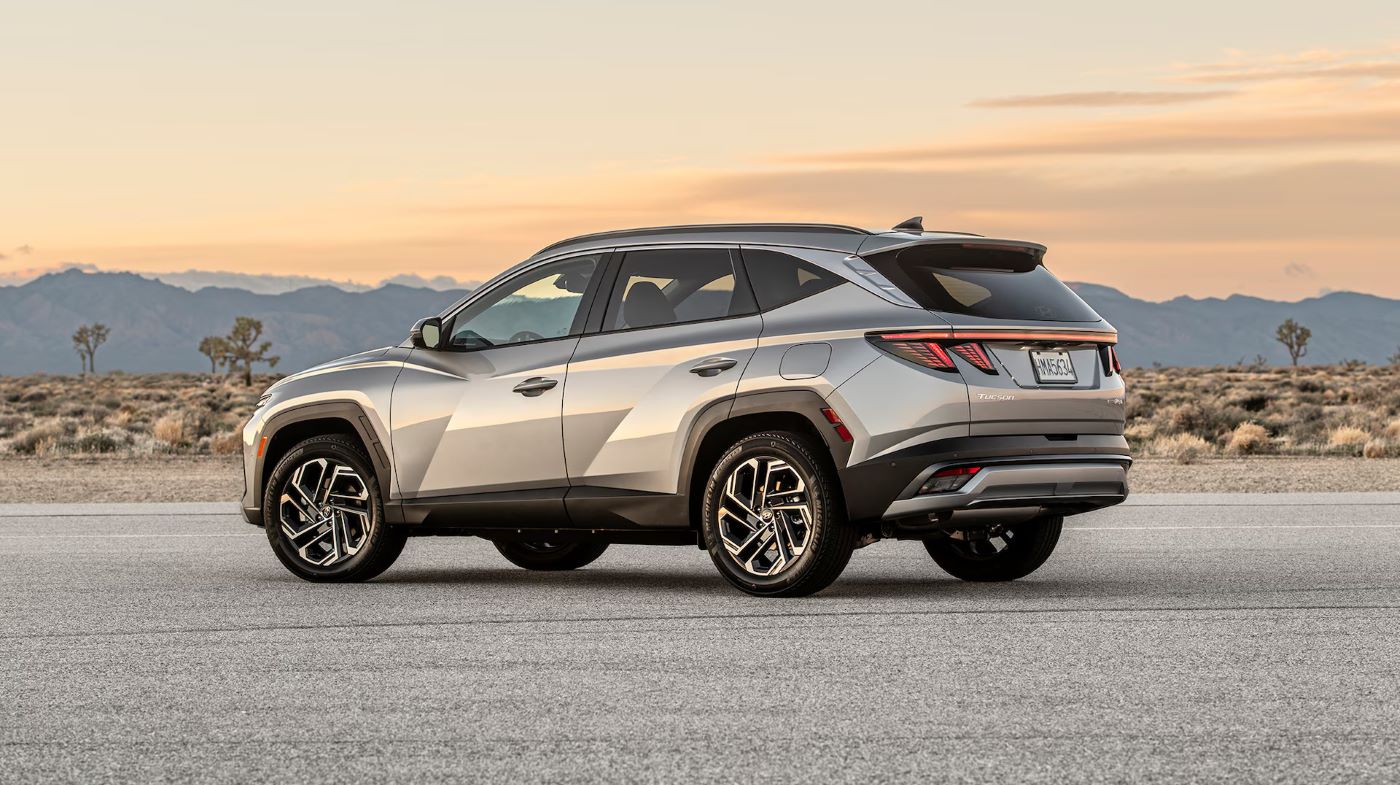
Material selection demonstrates sustainability without compromising performance. The netting incorporates recycled ocean plastics in its construction aligning with the vehicle’s eco-friendly positioning while delivering exceptional durability.
Unlike conventional petroleum-based materials, this specialized composition resists UV degradation and maintains elasticity across extreme temperature ranges crucial for a component repeatedly exposed to sun through the rear window.
Particularly innovative are the Tucson Hybrid’s integrated side storage solutions. Rather than simple mesh pockets, these feature semi-rigid frames that maintain their shape whether empty or filled.
The pocket dimensions are specifically calculated to secure items hybrid owners frequently carry – from charging cables to reusable shopping bags while maintaining easy access while loading or unloading.
Installation demonstrates Hyundai’s user-centric design approach. Color-coded connection points eliminate confusion, while one-touch release mechanisms allow instant access to covered items when needed.
The entire system deploys or stows in seconds without requiring tools or significant strength. When not needed, the nets fold into a remarkably compact bundle that stores in a dedicated compartment, consuming minimal space in the already efficiently designed cargo area.
For Tucson Hybrid owners balancing environmental consciousness with practical daily utility, this thoughtfully engineered netting system eliminates the compromise between sustainable transportation and effective cargo management.
It demonstrates Hyundai’s commitment to addressing every aspect of the ownership experience rather than focusing solely on powertrain technology.
10. Volkswagen ID.4
The Volkswagen ID.4 approaches cargo management with the same forward-thinking philosophy that defines its electric vehicle platform. Recognizing that EV owners often transition from conventional vehicles with established cargo expectations, Volkswagen engineered a netting system that both acknowledges traditional needs and introduces innovations specific to electric driving.
The result is perhaps the most thoughtfully designed cargo solution in the electric crossover segment. What immediately distinguishes the ID.4’s cargo nets is their specialized construction for electric vehicle use cases.
The primary net utilizes a proprietary elastic compound developed specifically to maintain consistent tension across the extreme temperature variations common in EVs, particularly important given the thermal management challenges of battery vehicles.
Unlike conventional automotive netting, this material maintains optimal elasticity whether the vehicle has been sitting in subfreezing temperatures or has just completed DC fast charging that generates significant battery heat.
The system’s versatility particularly impresses. The standard configuration provides traditional horizontal coverage, but Volkswagen’s engineers incorporated additional mounting points, enabling the same components to create vertical dividers or specialized configurations for EV-specific cargo like charging cables and portable EVSE equipment.
Most cleverly, dedicated loops accommodate the ID.4’s available “EV emergency kit” containing items like charging port cleaners and electrical gloves accessories conventional vehicles don’t require.
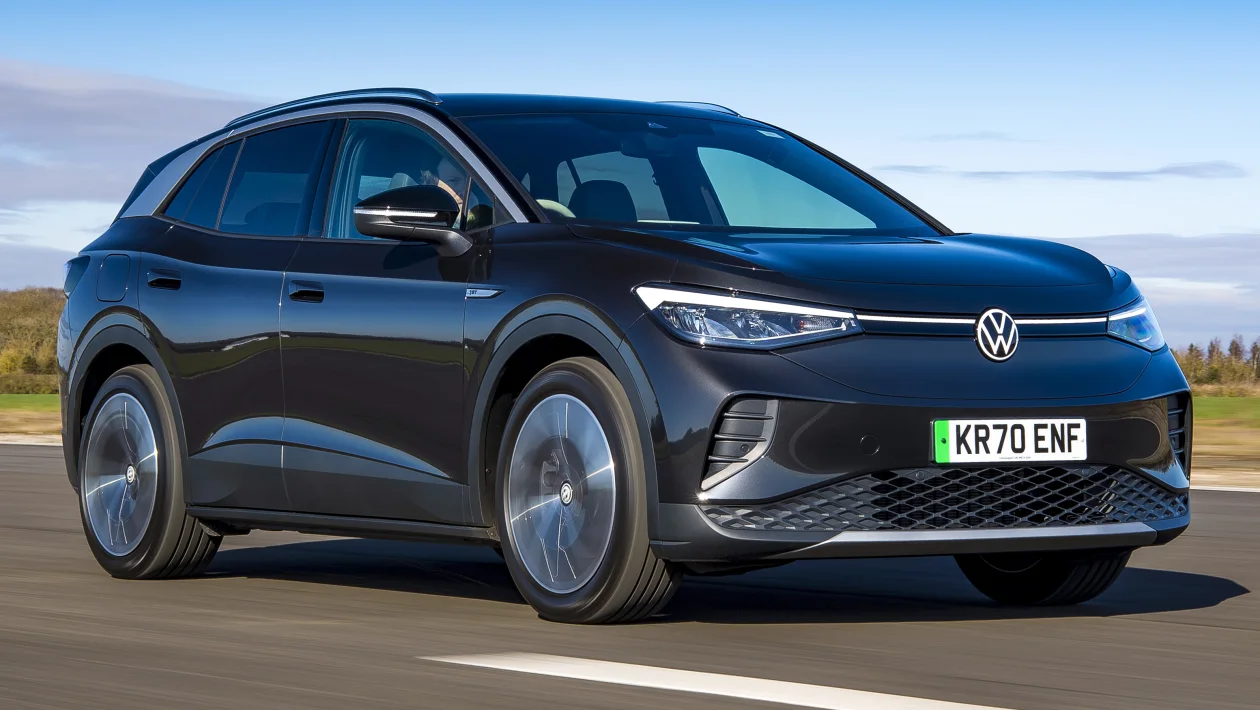
Material selection balances durability with the ID.4’s sustainability ethos. The netting combines recycled materials with bio-based compounds, delivering environmental benefits while maintaining long-term performance.
Unlike conventional petroleum-derived materials, this specialized composition resists the brittleness that typically develops over time in automotive interiors exposed to solar heat through windows.
Particularly innovative are the ID.4’s integrated side storage solutions designed specifically around electric vehicle ownership needs. Specialized pockets accommodate charging adapters, while dedicated cable management compartments prevent the tangles commonly experienced with portable charging equipment.
These thoughtful details eliminate daily frustrations that can diminish the electric ownership experience. Installation demonstrates Volkswagen’s commitment to user experience.
The entire system utilizes intuitive push-button connections that require minimal force to secure yet remain firmly anchored during driving. When not needed, the nets collapse into a dedicated storage compartment that integrates seamlessly with the ID.4’s minimalist interior design without consuming valuable cargo space.
For ID.4 owners navigating the transition to electric driving, this comprehensively engineered netting system transforms potential pain points into thoughtful solutions.
It demonstrates Volkswagen’s understanding that successful electrification requires addressing every aspect of the ownership experience, even seemingly minor details like cargo management to eliminate barriers to EV adoption.
Also Read: 12 Cars That Still Offer Front Bench Seating

